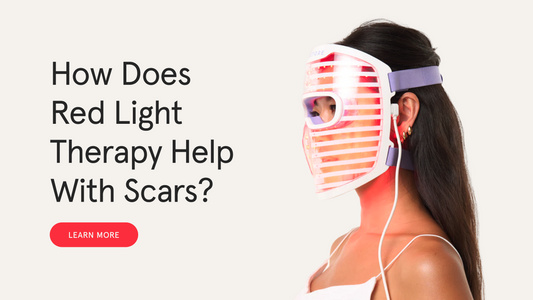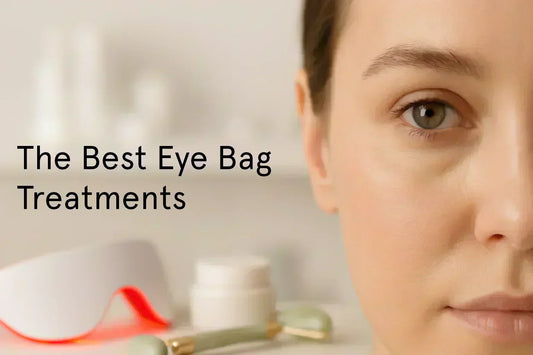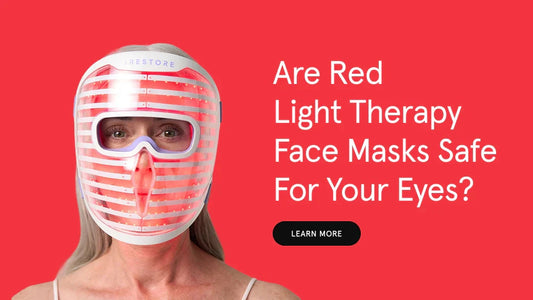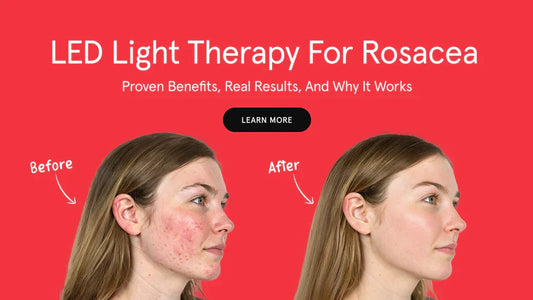The iRESTORE Blog
Confidence Starts Here


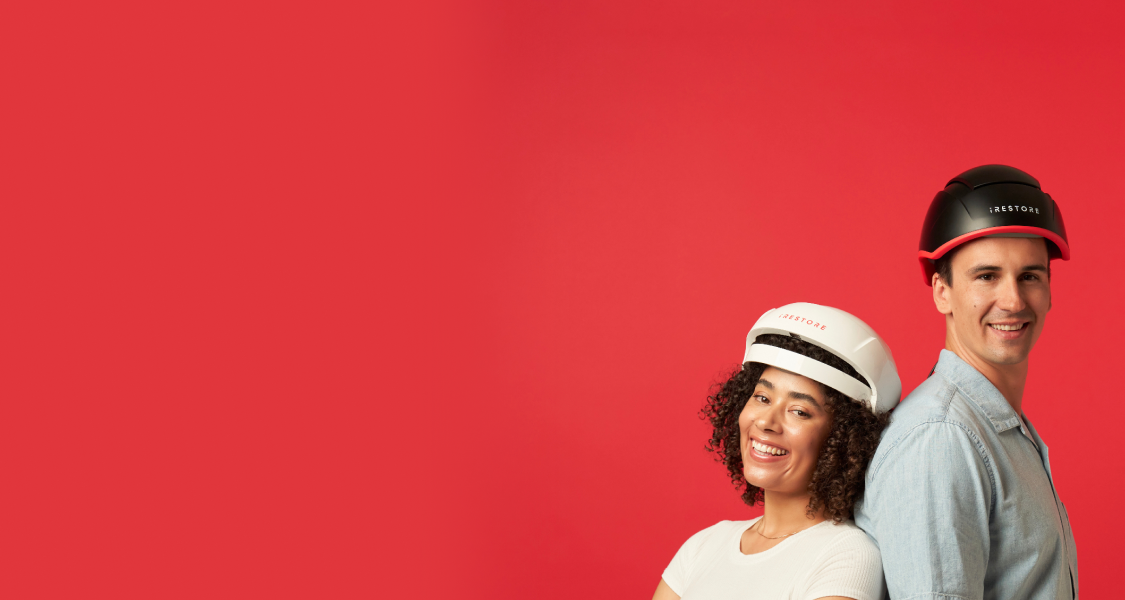

6 Results
How Does Red Light Therapy Help with Scars?
Scars are a natural part of the healing process, but they can often leave behind visible marks that affect both skin texture and confidence. Traditional treatments like invasive procedures, chemical creams, or surgeries may feel intimidating and carry risks such as irritation or downtime. For those looking for a gentler, non-invasive solution, red light therapy has gained attention as a safe and effective option to support the body’s natural repair processes. Red light therapy uses specific wavelengths of visible red and near-infrared light that penetrate the skin at different depths. They energize your cells’ mitochondria, which kickstarts repair and healing. This boost in cellular activity enhances blood flow, encourages collagen production, and reduces inflammation. Together, these effects create an ideal environment for tissue repair, making red light therapy a promising solution for improving the appearance of scars. How Red Light Therapy Helps with Scars Red light therapy supports scar healing in multiple ways, making it one of the most versatile non-invasive options available today. 1. Helps Scars Blend in BetterCollagen strengthens and rebuilds skin structure, while elastin improves flexibility and smoothness. With regular red light exposure, scar tissue gradually softens and blends more naturally with the surrounding skin. 2. Improves circulationBy enhancing blood flow, red light therapy helps deliver oxygen and nutrients more efficiently to damaged areas. It also aids in removing waste products, which accelerates tissue repair and recovery. 3. Reduces inflammationInflammation often contributes to redness, swelling, and discomfort around scars. Red light calms irritated skin, creating a healthier environment for long-term regeneration. Different scar types can respond positively to these benefits. Acne scars may look less indented, surgical scars can become smoother, and injury-related scars may fade in appearance. While newer scars generally respond faster, even older scars can improve with consistent treatment. Choosing the Right Red Light Therapy Device With the growing popularity of light-based treatments, there are now both professional and at-home red light therapy options available. Professional devices: Found in dermatology or wellness clinics, they often deliver higher intensity treatments but require repeated visits that can be costly over time. At-home devices: Designed for convenience, these provide therapeutic wavelengths that make it easier to maintain consistent treatments without leaving home. When evaluating devices, consider: Wavelengths between 630 and 850 nm for optimal skin benefits. Treatment coverage that suits your target area. Ease of use, ensuring you can comfortably integrate sessions into your routine. Consistency is the key factor in seeing results, so choosing a device that supports regular use is essential. How Red Light Therapy Works with iRESTORE iRESTORE is widely recognized for its expertise in light-based wellness technology. While the brand is best known for its hair growth systems, the same science behind its devices targets red light wavelengths that promote cellular energy and circulation, supporting broader skin health benefits, including scar care. Loved by over 500K customers worldwide, iRESTORE offers safe, effective, and easy-to-use light therapy devices for home use, making it simple to enjoy the benefits of red light therapy without depending on costly in-office treatments. How to Use Red Light Therapy for Best Results The effectiveness of red light therapy for scars depends heavily on consistent use. At-home devices make it easy to build treatment into your wellness or skincare routine. Prepare your skin: Begin with clean, dry skin for maximum light absorption. Follow device guidelines: Position the device 6–12 inches away for even coverage. Sessions usually last 10–20 minutes. Set a routine: Aim for 3–5 sessions per week. Sticking to the same time each day, such as during your skincare routine, can help maintain consistency. Support with skincare: Apply a gentle, fragrance-free moisturizer afterward to lock in hydration. Track progress: Taking progress photos every few weeks helps you notice subtle but steady improvements. Over time, these habits allow red light therapy to gradually soften scars, reduce discoloration, and improve overall skin smoothness. Safety Tips and Things to Know Red light therapy is non-invasive and generally well-tolerated, with minimal risk of side effects. Most users experience only a mild warming sensation during treatment. Unlike chemical peels or laser resurfacing, it doesn’t damage the skin or require recovery time. However, results vary based on scar type, age, and overall skin health. People taking photosensitive medications or with certain medical conditions should consult a healthcare provider before beginning treatment. For deeper surgical or long-standing scars, seeking input from a dermatologist can ensure the best results. Reducing Scars with Red Light Therapy Red light therapy is an effective, science-backed approach for improving the look and feel of scars. By stimulating collagen, increasing circulation, and reducing inflammation, it promotes the skin’s natural healing process without the risks of more invasive procedures. With the availability of safe and convenient at-home devices, it’s easier than ever to make red light therapy part of your daily routine. For those looking to reduce scar visibility while supporting overall skin health, this treatment offers a practical and confidence-boosting solution. Confidence Restored! FAQs 1. How long does it take for red light therapy to improve scars?Most people start noticing subtle changes in skin texture and tone after 4–6 weeks of consistent use. More visible improvements in scar appearance may take 8–12 weeks or longer, depending on the scar type and age. 2. Can red light therapy remove scars completely?Red light therapy cannot erase scars entirely, but it can significantly reduce their visibility. Over time, scars may appear smoother, lighter in color, and less noticeable against the surrounding skin. 3. Is red light therapy safe for all skin types?Yes, red light therapy is considered safe for all skin types and tones. Since it does not use UV light or harsh chemicals, it does not increase the risk of burns or pigmentation changes when used correctly. 4. Does red light therapy work better on new scars or old scars?Newer scars generally respond more quickly since the healing process is still active. However, older scars can also improve with consistent treatments, though it may take more time to see noticeable changes. 5. Can I combine red light therapy with other scar treatments?Yes. Many people pair red light therapy with moisturizers, silicone gels, or dermatologist-recommended treatments. Always consult a professional if you plan to combine it with more aggressive procedures like microneedling or chemical peels. Disclaimer: The iRESTORE blog is for informational purposes only and is not intended to replace professional medical advice or treatment. Please do not ignore professional guidance because of information you’ve read here. If you have concerns about your hair or skin health, we encourage you to consult a qualified healthcare professional.
Read More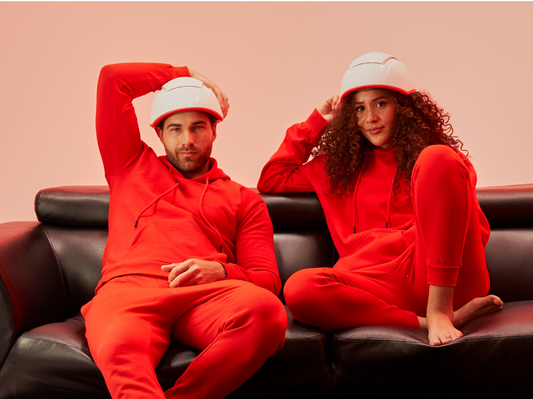
About iRESTORE
We believe in safe & clean hair care that empowers you to look and feel your best without compromising your health.
The Best Eye Bag Treatments
Eye bags can be caused by fluid retention, thin skin, shifting fat pads, allergies, salt intake, and sleep habits. The best approach mixes smart daily care with targeted treatments. Below, we compare popular under eye bag treatments—including red light therapy under eyes with the Illumina LED Eye Mask—so you can choose confidently. What Causes Eye Bags? “Eye bags” usually reflect a mix of factors: temporary fluid buildup, thinning skin that reveals shadows, and in some cases fat pads shifting forward with age. Your plan should match the driver—surface puffiness vs. structural changes. Quick tip: Improve sleep consistency, manage salt/alcohol, use daily SPF, and stay gentle with the under-eye area. These habits make every treatment more effective. How Red Light Therapy Supports the Under-Eye Area Eye red light therapy uses specific wavelengths that are absorbed by skin cells, encouraging cellular activity and collagen support. For many, this leads to a firmer, smoother look over time—especially where thin, crepey skin exaggerates puffiness and shadows. It’s non-invasive, drug-free, and designed for consistent at-home use. Pros: Why a Red Light Therapy Eye Mask is a Top Choice Skin quality support: Encourages collagen activity to improve the look of thin, crepey skin. Non-invasive & drug-free: No needles, downtime, or prescriptions. Consistency made easy: Hands-free sessions that slot into your routine. Pairs with skincare: Complements retinol, peptides, and hydration (alternate nights if sensitive). Even coverage: Mask design treats both under-eye and crow’s-feet zones uniformly. Cons (What to Expect) Gradual results: Best with steady use over weeks. Habits still matter: Poor sleep and high salt can diminish progress. Not for severe fat-pad prolapse: Advanced eye bags may need in-office options. Illumina Eye Mask vs. Other Under-Eye Treatments The Illumina LED Eye Mask is our recommended baseline for ongoing maintenance. Here’s how it stacks up against other options for how to remove eye bags and keep them in check. Comparing the best eye bag treatment options Treatment What it targets Pros Cons Best for iRESTORE Illumina Eye Mask Skin quality (collagen), mild puffiness, crepey texture Non-invasive; at-home; easy to stay consistent; complements skincare Results build gradually; requires routine; not a surgical replacement Daily self-care and long-term maintenance Eye creams (caffeine, peptides, retinol) Fluid retention, fine lines, hydration Simple; travel-friendly; budget-flexible Surface-level; must use daily; potency varies widely Maintenance and pairing with devices Cold tools / patches Morning puffiness (fluid) Immediate depuff; inexpensive Temporary; no structural change Quick fixes and travel In-office filler Tear-trough hollowing (shadowing) Fast improvement in volume Cost; expert skill required; not for true puffiness Deep hollows without significant bags Energy devices (RF, microneedling, lasers) Skin laxity and texture Stronger collagen remodeling Downtime and higher cost; strict sun care Moderate laxity + texture concerns Lower blepharoplasty (surgery) Fat-pad prolapse, severe bags Definitive anatomic correction Surgery and recovery; highest cost Pronounced, persistent bags Why Many Start with the Illumina LED Eye Mask Hands-free routine: Easy to stick with several nights per week. Comfortable, even coverage: Targets under-eye and crow’s-feet together. Layer-friendly: Use on clean, dry skin; follow with gentle hydration. Non-invasive first step: Ideal before considering procedures. A Simple Week-One Plan for Eye Bags Morning: Cool compress 3–5 minutes, then caffeine/peptide eye cream. Evening (3–5x/week): Illumina session on clean, dry skin; moisturize after. Always: Daily SPF, consistent sleep, manage allergies, moderate late-night salt. FAQ: Red Light Therapy Eye Bags Is red light therapy safe around the eyes? Use devices as directed and avoid staring directly into LEDs. If you have eye conditions or photosensitivity, consult your clinician first. How long until I notice changes? Most people see gradual improvements with steady use over several weeks, supported by healthy sleep and daily SPF. Can I combine Illumina with retinol or acids? Yes—alternate nights if your skin is sensitive. Keep actives away from the immediate lash line and follow with hydration. Shop the Illumina LED Eye Mask under eye bag treatments, red light therapy under eyes, how to remove eye bags, eye red light therapy, red light therapy eye bags, best eye bag treatment
Read MoreAre Red Light Therapy Face Masks Safe for Your Eyes?
Yes, red light therapy face masks are safe for your eyes when used as directed. Red light therapy face masks have become one of the most popular tools in modern skincare routines. Once limited to professional treatments, they’re now widely available for at-home use, giving people a convenient way to target concerns like fine lines, dullness, and uneven skin tone. The soft red glow may look futuristic, but its promise of rejuvenated skin has made these masks a go-to option for anyone looking to upgrade their daily self-care.With that rise in popularity, an important question often comes up: Are red light therapy masks safe for your eyes? It’s a valid concern. Our eyes are sensitive, and the idea of bright LEDs positioned close to the face can naturally cause hesitation. Some wonder about eye strain, while others worry about potential long-term effects. How Red Light Therapy Works Red light therapy works by using gentle red and near-infrared light that is safe for the skin. Unlike UV rays from the sun, which can be harmful, this type of light is non-invasive and soothing. It does not burn or damage the skin. Instead, it works with the body in a supportive way. When the light reaches the skin, it travels into the deeper layers where it helps boost the skin’s natural repair process. This stimulation encourages the production of collagen, improves circulation, and supports healthier-looking skin overall. Over time, it can help soften fine lines, brighten a dull complexion, and create a smoother, more radiant texture. Red light therapy face masks are designed to spread this glow evenly across the skin. Because the light is gentle and carefully controlled, it’s safe for regular at-home use and doesn’t require recovery time like harsher treatments. With consistent use, many people notice their skin looks fresher, healthier, and more revitalized. Benefits of Red Light Therapy Face Masks One of the biggest reasons red light therapy masks have become so popular is the visible impact they can have on skin health and appearance. Consistent use can lead to a range of improvements that many people notice within just a few weeks. Collagen Support for Firmer SkinRed light stimulates the natural production of collagen, the protein that keeps skin firm and youthful. With time, this can soften the look of fine lines and wrinkles. Brighter, More Even Complexion By improving circulation, red light helps bring more oxygen and nutrients to the skin. The result is a complexion that looks fresher, brighter, and more even in tone. Smoother, Healthier-Looking Texture Regular sessions can help reduce roughness and give the skin a more refined, radiant surface, while also minimizing the tired, dull look caused by daily stress. Beyond the visible results, red light therapy masks also offer convenience. Instead of scheduling expensive spa treatments, users can enjoy the same technology at home. The ease of use makes it simple to stay consistent, which is key to seeing long-term results. Eye Safety with Red Light Therapy Masks With a mask that sits so close to your face, it’s natural to pause and ask whether the light might affect your eyes. Many people wonder if the brightness could cause strain or even long-term issues. These concerns usually come from comparing red LEDs to harsher light sources like UV rays or medical lasers, which are known to cause damage. The reality is different. Red and near-infrared light used in therapy masks is low-level, non-invasive, and generally considered safe when used properly. Unlike UV, it doesn’t damage tissue or increase risks linked to sun exposure. Instead, the light is carefully calibrated to target the skin’s surface and deeper layers for rejuvenation, without harming surrounding areas. That said, the same advice applies here as with any light-based device: don’t stare directly into the bulbs. For some people, especially those who are sensitive to brightness, prolonged eye exposure can feel uncomfortable. Closing your eyes during a session or wearing protective eyewear are simple ways to enhance comfort. Well-designed masks are built with this in mind, limiting unnecessary direct exposure to the eyes while still delivering results. By choosing a trusted device and following usage guidelines, users can enjoy the skin benefits of red light therapy while knowing their eye health is being looked after. iRESTORE’s Thoughtful Approach to Eye Comfort and Skin Health The iRESTORE Face Mask has been carefully designed to combine skincare benefits with user comfort and safety. Using controlled red LED light at gentle wavelengths, the mask delivers even coverage across the skin while avoiding unnecessary strain on the eyes. Unlike stronger medical-grade lights, the LEDs in the mask are calibrated for safe, at-home use. The mask’s structure naturally shields the eye area, allowing users to relax during each session without feeling overwhelmed by brightness. For added comfort, it can also be used with the eyes closed. Those who are especially sensitive to light may choose to wear protective eyewear, although for most people it isn’t necessary. Every iRESTORE Face Mask comes with clear usage guidelines, including recommended session times and steps to maximize results. Following these instructions ensures that the therapy remains safe in the long term. By combining thoughtful design with straightforward guidance, iRESTORE makes red light therapy accessible to anyone looking to enhance their skincare routine at home. The focus is simple: deliver real skin benefits while keeping the experience safe, comfortable, and easy to use. Hear It from Our Customers Safe for Eyes, Healthy for Skin Red light therapy face masks have transformed the way people approach skincare at home. They make it possible to enjoy the same type of light technology once reserved for professional settings, now with the convenience of daily use. While concerns about eye safety are common, the evidence shows that when these masks are used as directed, they are safe, comfortable. The benefits go far beyond safety, from supporting collagen and improving texture to brightening the complexion and reducing signs of fatigue. With consistent use, results build naturally over time and leave the skin looking healthier and more radiant. Designed with user comfort in mind and trusted by over 500,000 customers worldwide, the iRESTORE Face Mask makes it simple to enjoy these results at home. With iRESTORE, it is not just better skin, Confidence Restored! FAQs Are red light therapy face masks safe for the eyes?Yes, red light therapy masks use gentle red and near-infrared light that is non-invasive and safe when used properly. They do not emit harmful UV rays, but it is recommended to avoid staring directly into the bulbs during use. Do I need to wear protective eyewear while using a red light therapy mask? Protective eyewear is optional. Most masks, including the iRESTORE Face Mask, are designed to minimize direct exposure to the eyes. Simply closing your eyes during a session is usually enough for comfort. How does red light therapy benefit the skin? Red light therapy helps boost collagen production, improve circulation, brighten skin tone, and smooth texture. With consistent use, it supports healthier, firmer, and more radiant-looking skin. Can I use a red light therapy mask every day? Yes, many at-home masks are designed for regular use. iRESTORE provides clear usage guidelines with recommended session times to help you stay consistent and maximize results safely. What makes the iRESTORE Face Mask different from other devices?The iRESTORE Face Mask is built with user safety and comfort in mind. It uses carefully calibrated red LED light, offers even skin coverage, and naturally shields the eye area. It also comes with clear instructions to ensure safe and effective use. Disclaimer: The iRESTORE blog is for informational purposes only and is not intended to replace professional medical advice or treatment. Please do not ignore professional guidance because of information you’ve read here. If you have concerns about your hair or skin health, we encourage you to consult a qualified healthcare professional.
Read MoreLED Light Therapy for Rosacea: Proven Benefits, Real Results, and Why It Works
Rosacea can feel like a constant battle, from the morning flush in the mirror to the sting of stepping outside on a sunny day. For millions of people, this chronic skin condition isn’t just about appearance; it’s about comfort, confidence, and quality of life. Advances in non-invasive skincare technology mean there are now safe, clinically proven ways to calm redness, soothe irritation, and support healthier skin from within. LED light therapy has emerged as one of the most promising options backed by research, trusted by dermatologists, and gentle enough for sensitive skin.In this guide, we’ll explore how LED light therapy works for rosacea, the science behind its results, and practical ways you can use it to take control of your skin health. Rosacea: Causes, Symptoms, and Triggers Rosacea is a chronic skin condition that goes beyond occasional flushing; it’s a persistent issue that can cause visible redness, visible blood vessels, and even acne-like bumps. Rosacea develops gradually and may worsen without proper management. Its exact cause is still unknown, but experts believe it’s linked to a combination of genetics, immune system response, and environmental factors. Understanding its symptoms, causes, and common triggers is the first step toward finding the right treatment.. Rosacea presents in several subtypes: Erythematotelangiectatic Rosacea – Persistent redness, flushing, and visible blood vessels. Papulopustular Rosacea – Redness combined with acne-like bumps or pustules. Phymatous Rosacea – Thickened skin texture, often around the nose. Ocular Rosacea – Redness, burning, or irritation affecting the eyes. While rosacea’s exact cause remains unclear, we know it’s influenced by a combination of genetics, immune response, and environmental triggers. Common triggers for flare-ups include: Sun exposure Hot beverages or spicy foods Alcohol Stress Extreme temperatures Beyond the physical effects, rosacea can have a real emotional impact. Many sufferers report reduced confidence, social discomfort, and even anxiety during flare-ups. The good news is that with the right treatment approach, like LED light therapy, you can manage symptoms effectively, reduce flare frequency, and restore both skin comfort and self-confidence. What Is LED Light Therapy and How Does It Work for Rosacea LED light therapy is a gentle and non-invasive skincare treatment that uses specific wavelengths of light to improve skin health at a cellular level. For rosacea, two wavelengths have shown the most proven effectiveness. Red Light (630 to 660nm) helps target surface inflammation, reduce redness, and support collagen production to strengthen the skin barrier.Near-Infrared Light (810 to 850nm) penetrates deeper into the skin to boost circulation, speed up tissue repair, and energize skin cells for faster recovery. When these wavelengths reach the skin, they are absorbed by the cells’ mitochondria, often referred to as the power plants of the cell. This process triggers increased production of adenosine triphosphate, also known as ATP, which is the energy source that fuels cell repair and renewal. For people with rosacea, this process means calmer and less inflamed skin, stronger resistance to everyday triggers such as heat or wind, and a smoother, healthier-looking complexion over time. Unlike topical creams or oral medications that may cause irritation, LED light therapy works in harmony with your skin’s natural processes. It is safe for sensitive skin, suitable for long-term use, painless, and requires no downtime. Treatments can be done in the comfort of your home or a professional setting. Benefits of LED Light Therapy for Rosacea LED light therapy provides more than just surface-level improvements. It addresses the underlying causes of redness and discomfort, helping you achieve lasting results. Reduce Persistent Redness By calming overactive blood vessels and controlling inflammation, LED therapy visibly fades facial redness even during flare-ups. Soothe Irritation and Sensitivity The gentle wavelengths help regulate the skin’s immune response, reducing the burning, stinging, and tenderness often experienced with rosacea. Strengthen the Skin Barrier LED therapy boosts collagen and elastin production, which helps fortify the skin against environmental triggers such as sun, wind, and temperature changes. Improve Skin Texture and Tone With healthier skin cells and improved circulation, the skin appears smoother, more even, and less blotchy over time. Enhance Confidence and Comfort Calmer skin and fewer flare-ups make it easier to go about your day without worrying about sudden redness. Clinical Evidence and Real-World Results of LED Therapy for Rosacea How to Use LED Light Therapy for Rosacea at Home At iRESTORE, we believe every step in your treatment should be simple, comfortable, and backed by science. Here’s how to get the most from your LED light therapy sessions, so you can see visible changes in redness and feel confident about your skin again. Step 1: Prepare Your Skin – Give Your Skin a Fresh Start Gently cleanse with a mild, rosacea-safe cleanser to remove makeup, sunscreen, and impurities. Pat dry with a soft towel; avoid rubbing to prevent irritation. Keep your skin product-free before treatment. This allows the therapeutic light to penetrate without barriers. Step 2: Set Up Your Device – Choose the Right Light for Results Select the red light + near-infrared light mode, clinically shown to reduce inflammation, improve circulation, and energize skin cells. Position your device so it fully covers the treatment area. With masks or panels, ensure a comfortable fit for even light exposure. Step 3: Begin Your Treatment – Just 10 Minutes Relax and let the light do the work. There’s no heat, no pain, and no downtime. Use 3–4 times per week to maintain steady progress. Each session helps calm redness, repair skin tissue, and strengthen your skin barrier. Step 4: Post-Treatment Care – Lock In the Benefits Apply a lightweight, fragrance-free moisturizer to support hydration. If your session is during the day, follow with a broad-spectrum SPF; rosacea-prone skin needs consistent sun protection. Step 5: Stay Consistent – Your Skin Will Thank You Most users notice visible improvements in 4–6 weeks of regular use. Take weekly photos to track changes in redness and texture. Combine with a gentle skincare routine and trigger management for lasting results. With just a few sessions each week, you can take control of your rosacea care from the comfort of home. Try iRESTORE LED devices today, trusted by 500K+ customers and backed by science. Safety, Side Effects, and Precautions for LED Light Therapy At iRESTORE, your safety and confidence always come first. LED light therapy is one of the gentlest, most skin-friendly treatments for rosacea, but understanding what to expect helps you use it with peace of mind. Possible Mild Side Effects: Some users may notice temporary, harmless effects during the first few sessions, such as: Mild redness or warmth in treated areas Slight tingling sensation as skin cells respond to the light These sensations typically fade within minutes to a few hours and are a normal part of the skin’s adjustment process. When to Consult a Professional First We recommend speaking with a dermatologist before starting LED therapy if you: Have open wounds, active skin infections, or severe inflammation Take photosensitizing medications (some antibiotics, acne treatments, or herbal supplements) Have a history of skin cancer or are undergoing treatment for it Are you pregnant or breastfeeding (for extra caution) Tips for Safe, Consistent Use Follow your device’s instructions for session length and frequency — overuse won’t speed results and may cause unnecessary irritation. Keep your device clean and store it in a dry, safe place. Always pair LED therapy with gentle skincare and daily sun protection for the best outcomes. iRESTORE Reassurance: LED light therapy is designed to work with your skin, not against it. By following safe-use guidelines and listening to your skin’s needs, you can enjoy visible improvements without downtime, discomfort, or harsh side effects. Making LED Light Therapy Part of a Complete Rosacea Management Plan LED light therapy can be a game-changer for managing rosacea, but the best results come when it’s part of a complete, skin-friendly lifestyle. By combining consistent treatment with healthy habits, you give your skin the best chance to stay calm, resilient, and flare-free. 1. Protect Your Skin from Triggers Sun protection is essential wear a broad-spectrum SPF daily, even indoors near windows. Minimize exposure to extreme temperatures and wind whenever possible. Keep a trigger diary to spot patterns with food, stress, or environmental changes. 2. Support Skin Barrier Health Use gentle, fragrance-free skincare products. Avoid harsh scrubs or strong chemical exfoliants that can aggravate redness. Moisturize regularly to keep skin hydrated and protected. 3. Maintain a Balanced Diet & Lifestyle Limit alcohol, spicy foods, and very hot drinks if they trigger flare-ups. Eat anti-inflammatory foods like berries, leafy greens, and omega-3-rich fish or plant sources. Manage stress with relaxation techniques such as yoga, meditation, or deep breathing. 4. Stay Consistent with LED Therapy Make sessions part of your weekly routine because results build over time. Track improvements with photos to stay motivated. Pair LED therapy with any dermatologist-recommended topical or oral treatments for a well-rounded approach. Calmer Skin and Renewed Confidence with LED Therapy Living with rosacea can feel like a constant balancing act, avoiding triggers, managing flare-ups, and searching for solutions that work. LED light therapy offers a new path forward: a safe, gentle, and clinically backed treatment that helps your skin heal from within. With consistent use, it can reduce redness, strengthen your skin’s natural defenses, and bring back the comfort and confidence you deserve. And when paired with healthy habits and trigger management, it becomes more than a treatment; it’s a long-term investment in your skin health. With iRESTORE, you’re not just managing rosacea you’re reclaiming comfort, control, and confidence in your skin. Confidence restored. Frequently Asked Questions About LED Light Therapy for Rosacea Is LED light therapy safe for rosacea-prone skin? Yes. LED light therapy is non-invasive, gentle, and safe for sensitive or rosacea-prone skin when used as directed. It does not use UV light, so there’s no risk of sun damage. How soon will I see results from LED light therapy?Most people notice visible improvements such as reduced redness and calmer skin within 4–6 weeks of consistent use, typically 3–4 sessions per week. Results may vary depending on your skin type and the severity of symptoms. Can I use LED light therapy with my other rosacea treatments?In most cases, yes. LED therapy works well alongside dermatologist-prescribed topical creams, oral medications, and gentle skincare products. Always check with your dermatologist before starting any new treatment combination. Does LED light therapy hurt or irritate?No. LED therapy is painless, with no heat, burning, or downtime. Some users may experience a mild warmth or slight tingling, which usually fades within minutes after the session. Will LED light therapy cure my rosacea?Rosacea currently has no cure, but LED light therapy can significantly reduce redness, calm irritation, and improve skin texture over time. Think of it as a long-term management tool rather than a one-time fix. Disclaimer: The iRESTORE blog is for informational purposes only and is not intended to replace professional medical advice or treatment. Please do not ignore professional guidance because of information you’ve read here. If you have concerns about your hair or skin health, we encourage you to consult a qualified healthcare professional.
Read More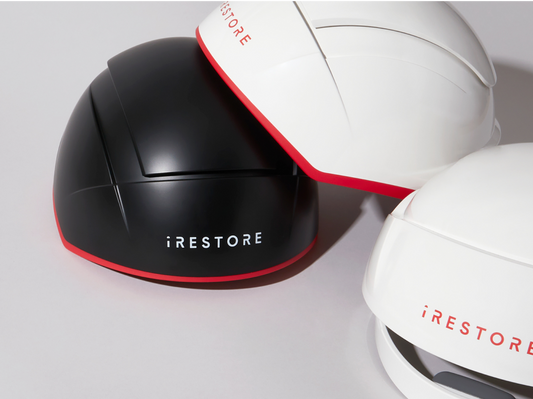
Reach Your Hair Growth Goals
Find out if iRESTORE can help you reverse your hair loss and restore your confidence. Take the quiz now to get personalized recommendations.
How Red Light Therapy Helps Reduce Facial Scars and Improve Skin Health
Scars tell a story of healing, resilience, and the body’s remarkable ability to repair itself. For many, especially when they appear on the face, those marks can also be a daily reminder they would rather soften or fade. Advances in skin health technology now offer new ways to support that process, and one of the most promising is red light therapy. This non-invasive treatment is gaining recognition in dermatology clinics and at-home skincare routines. By using specific wavelengths of light to reach deep into the skin, it encourages natural repair processes that can improve texture, tone, and overall skin appearance, including the visibility of facial scars. The Science Behind Red Light Therapy Red light therapy works through a process called photobiomodulation, a gentle yet powerful approach to supporting your skin’s natural healing abilities. When specific wavelengths of light penetrate your facial skin, they are absorbed by the mitochondria the tiny “power plants” inside your cells. This boosts the production of adenosine triphosphate (ATP), the energy your cells need to repair, regenerate, and function at their best. Red light in the 630–660 nanometer range helps calm redness, reduce inflammation, and trigger collagen production, which is essential for smoother, more even skin texture. Near-infrared light, between 810–850 nanometers, travels deeper to improve blood circulation and encourage the growth of healthy tissue beneath the surface. Together, these wavelengths create an optimal environment for scar healing and overall facial skin rejuvenation. Types of Facial Scars That Benefit from Red Light Therapy Red light therapy can benefit multiple types of facial scars. Here’s how it works for each. Not all scars are the same, and understanding their type can help set realistic expectations for results. Whether your scars are recent or years old, red light therapy can play a role in softening their appearance and improving overall skin texture. Acne Scars (Atrophic Scars) These are small depressions or indentations in the skin caused by past breakouts. They form when inflammation damages collagen during the healing process. Red light therapy stimulates new collagen growth, helping to fill in these areas and create a smoother, more even complexion. Post-Surgical or Injury Scars Facial scars from stitches, cuts, or other procedures can sometimes appear raised, tight, or discolored. Consistent red light therapy can help reduce redness, improve flexibility in the skin, and encourage healthy tissue regeneration. Hypertrophic Scars These raised scars stay within the boundary of the original wound and can feel firm or itchy. By calming inflammation and regulating collagen production, red light therapy helps these scars gradually flatten and blend more naturally with surrounding skin. Pigmented or Discolored Scars Even when a scar is smooth, uneven pigmentation can make it stand out. Red light wavelengths help even out skin tone by supporting cellular turnover and reducing visible redness or blotchiness. By matching the treatment approach to the type of scar, red light therapy with iRESTORE can become an effective part of a consistent facial care routine, helping you achieve healthier and more radiant skin over time. Benefits of Red Light Therapy for Facial Scar Reduction Red light therapy does more than just reduce the visibility of scars, it works beneath the surface to improve your skin’s overall health and resilience. When used consistently, it can deliver a range of benefits that make it an essential part of a facial care routine. Stimulates Collagen and Elastin Production Collagen gives skin its structure, while elastin keeps it flexible. Red light wavelengths trigger your skin’s natural repair processes, encouraging the production of both. This helps fill in indented scars, soften rough texture, and improve firmness. Reduces Redness and Inflammation Fresh scars often appear red, pink, or irritated. By calming inflammation at the cellular level, red light therapy helps even out skin tone and reduces the flushed appearance of scar tissue. Improves Blood Flow for Faster Healing Increased circulation delivers more oxygen and nutrients to damaged areas. This supports quicker recovery, healthier tissue formation, and better long-term results. Softens and Smooths Skin Texture Whether your scars are raised or uneven, red light therapy promotes balanced collagen production, gradually making the skin’s surface feel softer and look more refined. Gentle, Non-Invasive, and Safe for Most Skin Types Unlike chemical peels, microneedling, or laser resurfacing, red light therapy does not damage the skin or require downtime. This makes it suitable for regular use at home with devices like the iRESTORE Illumina LED Face Mask. By targeting both the visible appearance and underlying health of the skin, red light therapy offers a multi-layered approach to facial scar care — one that works with your skin’s natural healing ability rather than against it. How to Use Red Light Therapy Safely for Facial Scars Red light therapy is gentle and effective, but following the right routine ensures you get visible results without irritation. With the iRESTORE, you can bring professional-quality treatment into your daily skincare routine safely and conveniently. Before You Begin Cleanse your skin to remove makeup, sunscreen, and excess oils so light can penetrate effectively. Avoid harsh products such as strong exfoliants, retinoids, or acids right before your session to prevent unnecessary sensitivity. During Your Session Use the right wavelengths. The Illumina LED Face Mask device delivers red light at 630–660 nm to calm inflammation and stimulate collagen, and near-infrared light at 810–850 nm to boost circulation deep within the skin. Ensure full coverage with the ergonomic mask design so every part of the treatment area receives even exposure. Stick to recommended timing: most sessions last 10 minutes, 3–5 times per week. The built-in timer ensures you don’t over-treat. After Your Session Moisturize with a gentle, hydrating cream or serum to lock in moisture and support healing. Protect with SPF during the day to shield treated areas from UV damage, which can darken scars. Stay consistent results build over time, so regular use is key. Safety Considerations Red light therapy is well-tolerated by most skin types, but you should consult a dermatologist before starting if you: Have open wounds or active breakouts in the treatment area Are taking medications that increase light sensitivity Have a history of skin cancer or are undergoing related treatments Are pregnant or breastfeeding When used as directed, red light therapy is a safe and effective way to support your skin’s natural recovery process, helping facial scars fade while improving the overall health of your complexion. Restoring Skin, Restoring Confidence Scars are a natural part of the body’s healing process, but when they impact how you feel about your skin, finding a gentle and effective solution can make all the difference. Red light therapy provides a clinically studied way to support scar reduction while improving overall skin health. By encouraging balanced collagen production, enhancing circulation, and calming inflammation, iRESTORE works beneath the surface to promote smoother texture and a more even skin tone. With regular use over 6 weeks, this device delivers professional-quality results at home, making skin recovery both safe and convenient. Healthy, radiant skin does more than enhance appearance it can help restore confidence. Trusted by over 500K customers worldwide, iRESTORE offers a proven way to care for your skin naturally and beautifully. Confidence restored. Frequently Asked Questions Can red light therapy help reduce facial scars? Yes. Red light therapy can improve the appearance of facial scars by stimulating collagen production, enhancing circulation, and reducing inflammation. Over time, this can soften raised scars, smooth indented scars, and help discoloration blend with surrounding skin. How soon will I see results?Most people begin to notice visible improvements in skin texture and scar appearance within 4–8 weeks of consistent use. Newer scars often respond faster, but older scars can also benefit from regular treatments. Will red light therapy completely remove my scars?While it may not erase scars entirely, it can significantly improve their texture, color, and smoothness, making them less noticeable and more blended with your natural skin tone. Is red light therapy safe for all skin types?Yes. Red light therapy is non-invasive and generally safe for all skin types. The iRESTORE Illumina LED Face Mask uses clinically proven wavelengths and medical-grade LEDs designed for gentle, irritation-free use. Can I combine red light therapy with other facial treatments?Often, yes. Red light therapy can complement other dermatologist-recommended treatments, such as topical creams, chemical peels, or microneedling. Always consult your skincare professional before combining treatments. Disclaimer: The iRESTORE blog is for informational purposes only and is not intended to replace professional medical advice or treatment. Please do not ignore professional guidance because of information you’ve read here. If you have concerns about your hair or skin health, we encourage you to consult a qualified healthcare professional.
Read MoreRed Light Therapy for Longevity: iRESTORE Joins Bryan Johnson at the Don’t Die Summit
We couldn’t be more excited to share that iRESTORE is partnering with the Don’t Die Summit, a groundbreaking event led by Bryan Johnson. Known for his work in biohacking and longevity, Bryan is bringing together the brightest minds in health, wellness, and cutting-edge science.
Read More